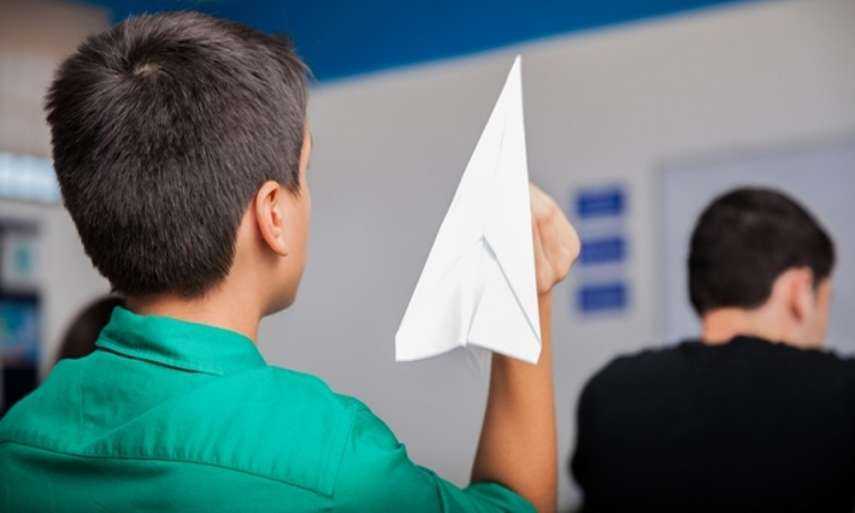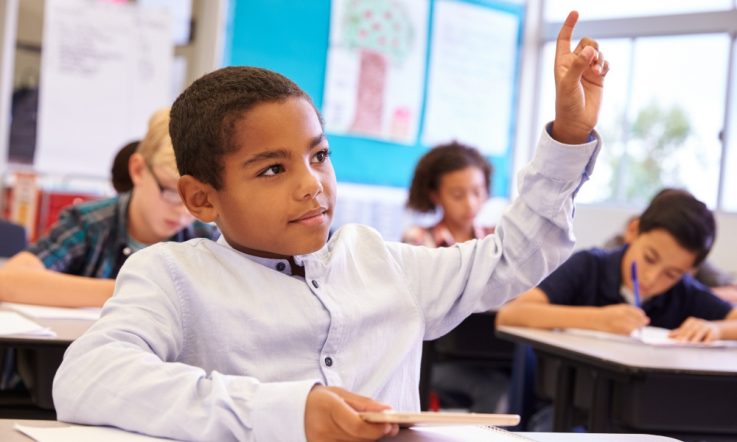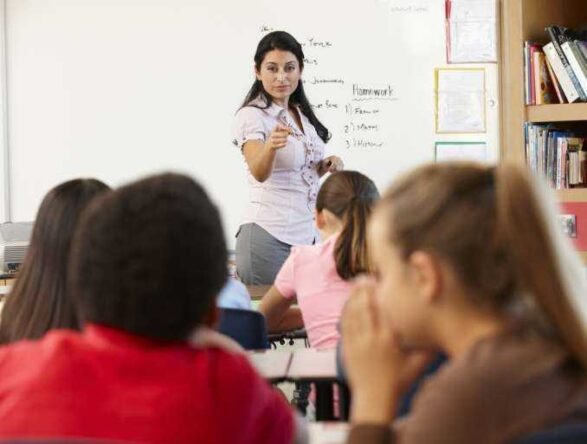There are many reasons why a teacher will want – and need – to follow up with a student beyond classroom. Behaviour concerns are the most common. Such follow-up may be as basic as a five minute chat after class, or an informal lunchtime conversation. It may entail a detention or post time-out meeting, or it may involve a mediation meeting between the student (or teacher) in conflict.
Key protocols to any follow-up meeting with students
In any one-to-one meeting with a student that addresses their behaviour, there are essential protocols for teachers.
First, briefly tune in to how the student is probably feeling at this point
For example, when the teacher directed Mohammed to stay back for repeatedly calling out and he stood at the door sulking, the other students had left (some grinning).
The teacher left the classroom door open (ethical probity) and said, ‘Look Mohammed, I know you’re probably feeling annoyed; I know you want to be outside with your friends … I won’t keep you long.’ We don’t need to apologise for this consequential meeting by saying something like ‘I’m so sorry I had to keep you back’. We’re not sorry – this consequence was necessary, appropriate, and right.
Some teachers disconcertingly use this follow-up time to ‘get back’ at the student: ‘You could be outside now couldn’t you? What did I say? Didn’t I say if you kept being stupid I’d keep you back? You said you didn’t care – you’re caring now aren’t you?’
While this might be tempting, it is unprofessional and unnecessary. It will only breed unwanted and unhelpful resentment.
Be sure to focus on the behaviour without ‘attacking’ the student
It can help (particularly with boys) to briefly ask if you can show them what their behaviour looked and sounded like.
The teacher showed Mohammed what his repeated calling out behaviour looked and sounded like.
She then stepped back and said, ‘That’s what I’m talking about.’
Most boys laugh and respond with ‘That’s stupid’.
The teacher answers: 'Well it’s stupid when I do it Mohammed, but that’s what it looked and sounded like when...'
Students don’t always see and hear how their behaviour comes across. Rogers (2003) states that respectful ‘behaviour mirroring’ is a way of raising the student’s kinaesthetic memory. This approach is helpful for briefly ‘simulating’ sulky, pouting, eyes-to-ceiling, ‘secondary behaviours’. For further information on this, see Make an Easy Transition Into On-Task Learning.
Note: We would not normally use this behaviour mirroring with students diagnosed with autistic spectrum.
Always give the student a right-of-reply – even in a five minute, after-class chat. If students prevaricate or even deny they did or said what they did, refocus. ‘I did hear you say/do ...’
Most students will say things like ‘I don’t do that all the time ...’ or ‘I’m not the only one’ or ‘I was just mucking around...’
Again refocus; ‘I don’t know if you do that [the behaviour you’ve been addressing] however that’s what you did [or] said ...’
‘When you call out like that it’s unfair to others because ...’
‘That kind of mucking around affects everyone’s right to learn ... and my right to teach ...’
When doing this use age appropriate language and focus on the expected behaviour and be sure to keep the focus on the behaviour under issue that day.
In a more extended follow-up, say, a detention, we can direct or encourage the student to write their response via proforma. The key questions to ask are:
- What did I do?
- What rule (right for older secondary students) was affected or broken by my behaviour?
- What’s my ‘side’ of about what happened?
- What can I do to fix things up, make things better?
- How can my teacher help me?
Be sure to refocus the student back to the right, responsibility or rule that was affected by their behaviour. In one way or another, distracting or disruptive behaviour affects the right to feel safe; the right to be treated with fairness and respect; the right to learn without distraction and disruption. This is the core of any whole-school behaviour agreement with students.
Remind them of the expected behaviour next time class is in session and then always separate amicably – or as amicably as possible. Remember that, as teachers, we are the adults. We may feel like a ‘parting shot’. For example, ‘Do that again [or] speak to me like that again and you won’t just be speaking to me!’
Instead say, ‘Thanks for staying back Mohammed, I’ll see you on Thursday.’ This keeps the tone and the manner respectful.
If we have had to keep a student back for several such meetings (even brief one-to-one behaviour interviews) we need to check with the year advisor to see if there is any pattern of distracting or disruptive behaviour across several classes and teachers.
In such cases a year-level personal support behaviour plan needs to be developed with at-risk students. This would – normally – be conducted by a senior colleague on behalf of all teachers and communicated to all colleagues in the year level team who work with the student in question. For further information, see Rogers (2011) and Rogers (2003).
References
Rogers, B. (2011). You know the fair rule: strategies for positive and effective behaviour management and discipline in schools. (3rd edition) Australian Council for Educational Research: Melbourne
Rogers, B. (2003). Behaviour recovery: Practical programs for challenging behaviour and children with emotional behaviour disorders in mainstream schools. (2nd Edition) Australian Council for Educational Research: Melbourne
This is the third in a series of articles on classroom discipline. To read Calm the Classroom Storm and Make an Easy Transition into On-Task Learning, simply click on the titles.



